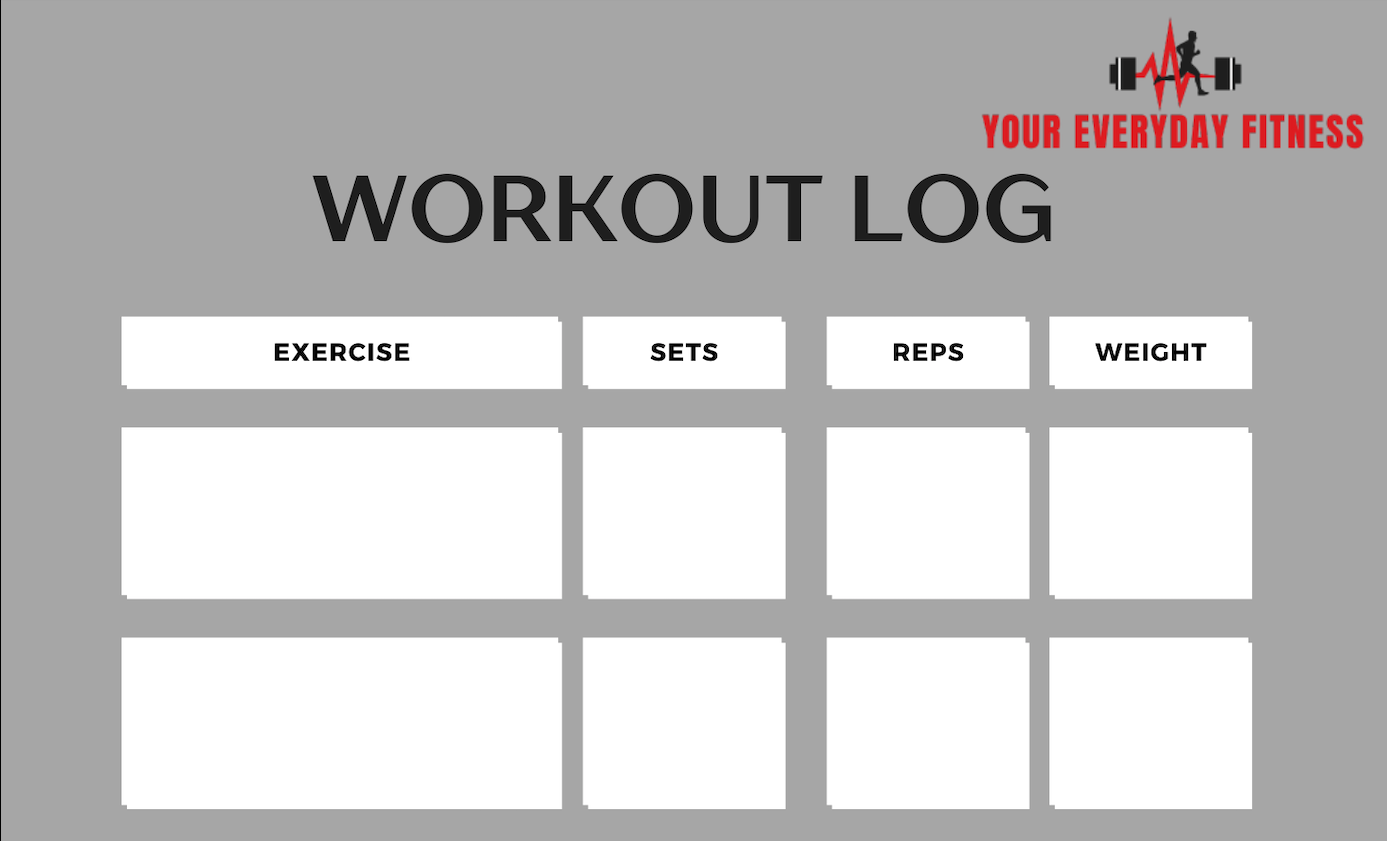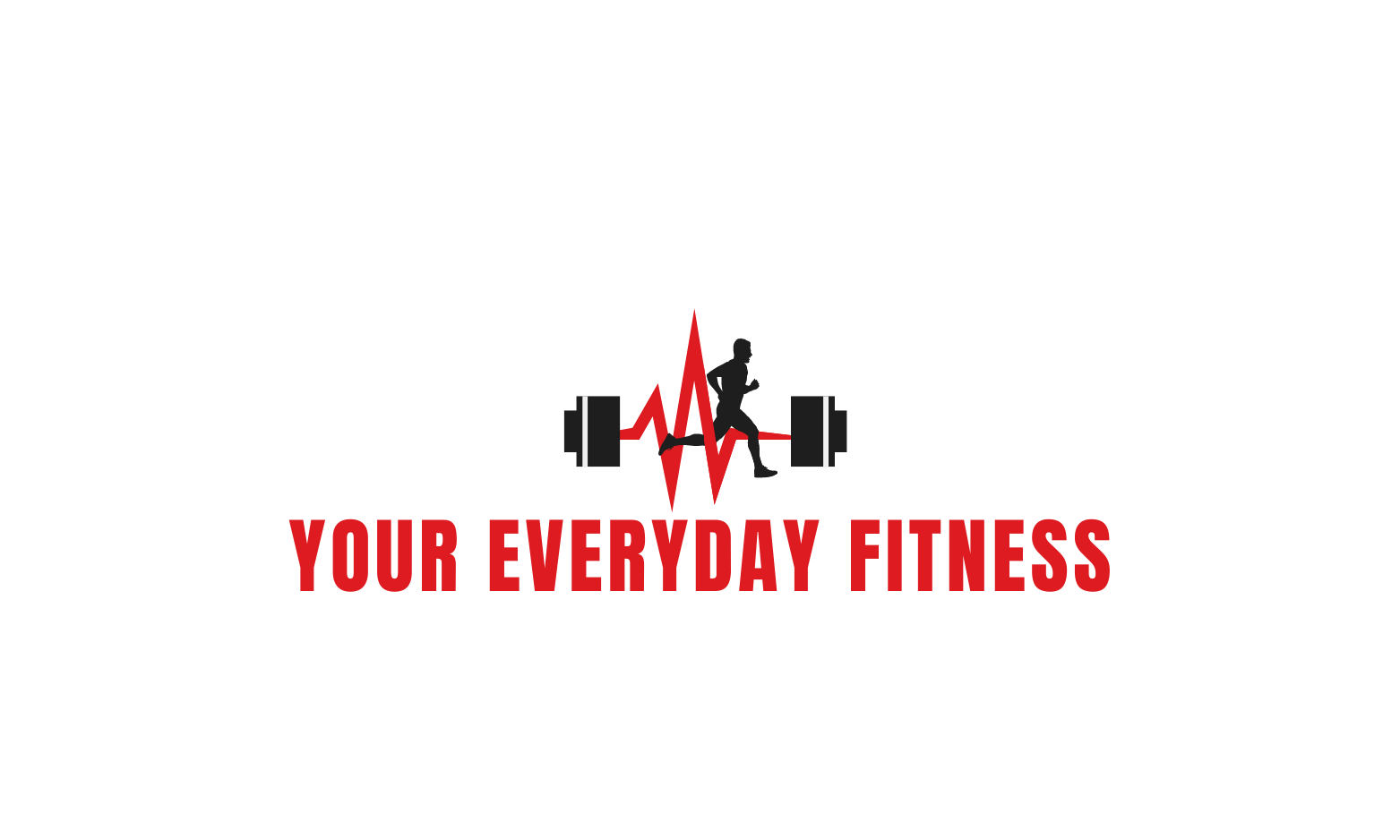Introduction to Strength Training
So, you are looking to get stronger and feel like an absolute beast. Or at least feel better in general, maybe that’s more accurate. Strength training may be exactly what you need. The beauty of strength training is that it does not matter if you are jus starting or if you’re experienced, either way you can reap tons of benefits from this type of workout.
Personally, strength training has changed my life. Not just physically, but mentally too. It has improved the way I approach life and I have seen it change the lives of others. So, why not you as well?
Why Strength Training is Great

Strength training isn’t just about building bodybuilder-like muscles; it can help you improve your overall health and performance levels each and every day. Here are some its benefits:
- You’ll Get Stronger: Welp, this one may be obvious. Strength training builds muscle and strength, making everyday tasks like carrying the groceries easier.
- Improved Mental Health: Strength training has been proven to reduce anxiety and depression, while improving self-confidence, self-love and boosting mental health. I can vouch for this one. It is AMAZING what it can do for your brain! The mental health benefits of strength training may be the most important benefit of all.
- Boost Metabolism & Manage Weight: When you build muscle, you boost your metabolism. This means you will naturally burn more calories throughout the day, even when binging your favorite TV show. By boosting your metabolism, you will burn more calories throughout the day, which means it is much easier to lose or maintain your weight.
- Reduce Injury Risk: Building strength and muscle by lifting weights will help prevent injuries!
- Better Sleep: Strength training leads to increased sleep duration, increased sleep quality, and it helps regulate your circadian rhythm. This means you will find it much easier to find a regular sleeping pattern.
- Better Body Composition: You will build muscle, and lose body fat. That’s quite a combo to build a toned physique and gain some confidence. You’ll start walking around with your chest out!
- Bone Health: Strength training has been shown to build strong bones, reducing the risk of osteoporosis and regular bone fractures.
As you can tell, strength training can seriously improve your life. Whether you want to get stronger, lose weight, or just feel better, strength training can help you hit those goals.
If you are ready to get going, don’t forget to check out our strength training for beginners guide for some tips and tricks to kick off your program. Now, lets get into how you can begin making a proper strength training program for yourself!
Setting Your Goals
Before you start throwing around weights, it’s very important to know what your goals are for this journey.
It has been proven that those who set goals before getting into an exercise routine exercise more frequently, and for a longer duration than those who do not (Buckman, 2011).
Having clear goals will help you stay on track, and it makes the journey more rewarding. You’ll be able to set realistic targets, and create a plan that fits your needs and helps you to see your progress.
Defining Your Strength Training Goals

What do you want to get out of strength training? Are you looking to get stronger, build lean muscle mass, boost your athletic skills, or just improve your overall fitness levels?
Ask yourself:
- What parts of my body do I want to get stronger? (i.e., arms, legs, core)
- Do I have any specific targets? (e.g., lifting a certain weight, getting good at a certain exercise)
- What are my long-term fitness goals?
Answering these will help you get more specific with your goals and shape a strength program that fits what you want to get out of strength training, and aligns with your overall fitness program.
Setting Realistic and Measurable Objectives

Once you know your goals, set objectives that are achievable and trackable. You need realistic goals that you can reach in a reasonable time, considering your current fitness, lifestyle, and any other limits you might have. Measurable goals let you see how you’re doing and will let you know if you need to change up your plan.
Think about:
- Setting specific strength targets (e.g., squatting 225 lbs, doing 25 straight push-ups).
- Setting a timeline for your goals. You want to push yourself, but give yourself enough time! Patience is key.
- Breaking your goals into smaller steps. This way you collect small wins, and get even more motivated to keep going.
By setting realistic and measurable goals, you can stay on track, celebrate your wins along the way, and adjust your plan as needed. You must stay dedicated to accomplish your goals!
Everyone’s goals are different, so make sure your plan fits YOU, no on else. If you’re just starting out or want more info, check out our article on strength training for beginners for some great tips to get you going.
Building Your Strength Training Program

Now that we have made up our mind on what we want to get out of this program, let’s go over how to create a strength training plan that fits those goals.
Know Where You’re Starting
Before you jump into strength training, it’s smart to see where you’re at. You need to be honest with yourself and figure out where your current fitness levels are at. This way you can pick the right strength training exercises and avoid getting hurt.
Here’s how to check your fitness:
- Strength Check: Do some basic moves like push-ups, squats, planks, etc. Seeing how many reps or how much weight you can do without getting too sore will be a good indicator.
- Flexibility Test: Stretch out your body. Notice any tight spots or areas where you can’t move freely.
- Cardio Check: Go for a jog, bike ride, or fast walk. Notice your heart rate and how long you can go for before you need a break. This will give you a good idea about your cardiovascular health.
These checks will help you pick a starting point.
Picking the Right Exercises

To build overall strength, you need to workout all the major muscle groups. Blending compound exercises (which workout multiple muscles) with isolation exercises (which focus on one muscle), is a good recipe for success.
Example Compound Exercises:
- Squats
- Deadlifts
- Bench Press
- Shoulder Press
- Pull-Ups
Example Isolation Exercises:
- Bicep Curls
- Tricep Extensions
- Leg Extensions
- Calf Raises
For more exercises and which muscles they target, check out our article on compound exercises.
How Often and How Long Should you Train?

How often you train and for how long depends on your goals, schedule, and how quickly you recover. You want to push your muscles, but they also need time to recover and grow. Muscles grow in the recovery phase, after you tear them.
General Tips for This:
- When you are beginning, aim for strength training 2-3 times a week. After weeks, work your way up to 4-5 days a week.
- Rest at least one day between sessions when you’re starting. Then rest every 3rd day, and keep changing it up as you go. But always have at least 1-2 rest days per week, no matter how advanced you are.
- If you’re new or short on time, even two days a week can make a difference!
Workout Duration:
- Sessions should last 30 minutes to an hour, including warm-up and cool-down. You don’t need to be in the gym for 2 hours at a time. One of the strongest and most muscular men to ever live, Dorian Yates, kept his workouts to about 45 minutes.
It’s crucial to start with weights and intensities that match your current fitness level. Then you can gradually increase both as you get stronger. Don’t try to do it all in the beginning, but if you got 10 push-ups this workout, try to get 12 next time! Small goals make a big difference.
So, now you know your goals, you’ve picked a few exercises, and you know how often and how long you will be working out for. That’s a good start. Now let’s get into what each workout should look like.
Structuring Your Workouts
Creating a great strength training program isn’t as difficult as you may think, but it does need some structure.
There are some essentials for all strength training enthusiasts, no matter the level: warming up, cooling down, strength training techniques, and progressing without hitting a wall.
The Warm-Up and Cool Down

One thing many lifters (even the experienced ones!) overlook is the warm-up. A good warm-up gets your blood pumping, loosens up your muscles, and will prevent serious injuries. Fradkin, Zazryn, and Smoliga (2010) conducted a study that showed that in almost 80% of the activities, performance improved by 1-20% due to a warm-up.
Here’s what a warm-up could look like:
- Dynamic Stretching: Do some stretches that mimic the moves you’ll be doing in your workout. This gets your joints moving and muscles ready. If you’re about to deadlift, do some back stretches! It’s common sense.
- Cardio: Some light jogging, indoor cycling, or even walking on an incline treadmill is a great way to slowly raise your heart rate.
- Activation Exercises: Try some light aerobic exercise that will target the muscles you will be targeting during your workout. This will prep them for a heavier load.
After your workout, don’t just drop the weights and call it a day. A cool down is also extremely important. Stretch back out, do some light walking, etc.. You want to slowly lower your heart rate back to normal to avoid tightness and injury.
Resistance Training Techniques

There are some key strength training techniques that will optimize your workouts. You need these to keep the muscles confused, which in turn will have them, growing constantly.
Here are some go-to methods:
- Compound Exercises: These are the multi-muscle group exercises like squats, deadlifts, and bench presses. These give you the most bang for your buck. Check out our article on compound exercises for more details.
- Bodyweight vs. Free Weights: Use a mix of both. Using your body weight can be great for flexibility and stability, while free weights are great for really building muscle on specific muscle groups, and it will also help improve your range of motion. Weight machines are also an amazing option that will help you maintain form. There are plenty of exercises that hit the same muscle group, so test out your options!
- Rep Ranges for Strength: Change up your rep ranges. Rep ranges between 3-5 with heavy weights build the most strength, while anything more than 8 reps with lighter weights will begin to focus on endurance. Dive deeper into this in our article on rep ranges for strength.
Progression and Periodization

In order to keep getting stronger and avoid plateaus, you need to gradually increase the weight, reps, or sets, or even cut down on rest periods. This is called the progressive overload principle.
One study found that by using this principle, participants increased their squat 1RM by 48lbs on average, and their muscle mass greatly increased (Plotkin et al. (2022)).
Periodization is when you break your training into phases, each with a different focus and intensity. For example, you can do 1 week of strength, and one week of endurance. It’s just about splitting up your training into different phases like that.
By mixing things up and continuing to push yourself, you will continue to make gains. For more tips on how to keep progressing, check out our article on breaking strength plateaus.
Remember to always listen to your body, maintain proper technique, and don’t skip out on the rest and recovery. Consistency in these areas will make a WORLD of difference for your gains.
Keeping Tabs on Your Gains
Keeping an eye on your progress is one amazing trick to making sure you’re hitting your original goals (remember when we made those?) and not moving without progress.
One study showed that consistent logging of workouts increased the likelihood of significant weight loss by 1.7x, and over 70% of people who logged their workouts lost weight (Sae-Lee et al., 2023).
Let’s break down two main ways to keep track of your progress during your program.
Logging Your Workouts
Quite simply, just jot down what you’re doing. Write down your exercises, sets, reps, and weights. This way, you can see how far you’ve come and figure out areas for improvement. Notebooks or fitness apps are classic strength training tools that can be your best friend when seeking progress.
I simply used to write my workouts in the notes app in my phone. Then, I got a workout journal, which I have kept all of them since 2019. I cannot express how awesome it is to look back at those workouts from 5 years ago and smile at how far I have come,
Here’s an example of what you’d want to write down:

This will keep you more focused on improvement, and you will know exactly where you stand relative to your own fitness levels. You can up the weight, sets, or reps the next workout based on your last log.
Need more on rep ranges? Check out our article on rep ranges for strength.
Tweaking Your Program
Every now and then, you gotta change things up to keep making gains and avoid hitting a wall. Here’s what to look at:
- Strength Gains: Are you using that progressive overload principle we talked about? If not, it’s time for more intensity, more volume, or different exercises.
- Recovery and Fatigue: How’s your energy? Listen to your body. If you’re dragging or sore all the time, you need more rest. Our article on strength training recovery has some great tips if this sounds like you.
- Form & Technique: Bad form can slow you down and get you hurt. If you’re not sure, ask a trainer or look up some how-to guides, like our piece on squat form improvement. One trick I use is to just look in the mirror as I lift, that way I can keep my form in check.
- Goal Progress: If your goals have changed or you’ve hit your targets already, make new ones! Always keep your goals updated to maintain progress.
Small, steady changes are the way to go. Too many changes can mess with your progress or get you injured.
By keeping track of your workouts and regularly changing up your program, you’ll make sure your strength training is on track for success.
Staying Motivated and Consistent

Staying consistent and getting amped up to get in the gym is probably the hardest part. Remember, 90% of the work is just showing up. I hear ya, it is hard.
That being said, I got some tips for you on how you can stay motivated and consistent on your fitness journey.
Buddy Up for Accountability
Exercising with others more frequently than alone resulted in a 31% lower likelihood of poor self-rated health compared to exercising only alone (Kanamori et al., 2016).
Find someone who shares your fitness goals or just someone who can keep you in check. Whether it’s a friend, family member, or someone else, having a partner can make all the difference.
I love working out with my friends. It keeps us all accountable and pushes us to be better! Plus, it’s just straight up more fun.
You can also join a local gym class or an online fitness group. Share your progress, tips, and cheer each other on. It’s a ball.
Celebrate the Wins, All of Them.
In a Harvard article titled “The Power of Small Wins,” Amabile and Kramer discuss how progress—even a small step forward—occurred on 76% of people’s best-mood days, when they celebrated themselves and had a positive attitude.
So don’t wait until you’ve hit your final goal to celebrate. Recognize and reward yourself for the small victories along the way. Everyday you step foot in the gym, you are leaving a better version of yourself. So take the time to pat yourself on the back, and treat yourself when you hit a new personal best. This can even mean you get to watch your favorite show that night.
These little rewards keep you motivated and remind you of how far you’ve come. It’s not just about the destination; it’s about enjoying the journey.
Break Through Plateaus

Everyone hits a wall sometimes. When things slow down (inevitably), just change things up! Muscles need to be surprised to grow. Try new training techniques like resistance bands or new core exercises.
Don’t forget to rest. Your muscles need time to recover and grow. Make sure you’re getting enough rest days and using proper recovery techniques. If you are always tired and continue to push yourself, you will begin to hate the relationship you have with working out. We CANNOT have that. It’s all love here.
Stay Consistent

Consistency is your best friend. Even on those days when you’re just not feeling it, showing up is a win. Stick to your strength training routine, and over time, it’ll become a habit.
Every challenge, every choice you have to make, is an opportunity. When you do not give up, but instead stay committed, you will get rewarded. You will never succeed by giving up when it gets hard.
By teaming up with new gym buddies, celebrating your wins no matter how small, and pushing through challenging times, you’ll stay motivated and consistent in your strength training.
You now have all the tips you need to make a proper strength training program and achieve all of your strength training goals. Time to become the best version of yourself! Let’s go!
Sources
- Plotkin D, Coleman M, Van Every D, Maldonado J, Oberlin D, Israetel M, Feather J, Alto A, Vigotsky AD, Schoenfeld BJ. Progressive overload without progressing load? The effects of load or repetition progression on muscular adaptations. PeerJ. 2022 Sep 30;10:e14142. doi: 10.7717/peerj.14142. PMID: 36199287; PMCID: PMC9528903.
- Sae-Lee K, Surangsrirat D, Parlawong C, Anawilkul TT, Assawachamrun N, Boonbandan P, Ladapongpuwat P, Chupetch B, Thongchai S, Pruphetkaew N, Thongseiratch T, Vichitkunakorn P, Ngamchaliew P. Workout Logging Through an mHealth App for Weight Reduction Among Different Generations: Secondary Analysis of the MED PSU×ThaiSook Healthier Challenge. JMIR Form Res. 2023 Jun 30;7:e45298. doi: 10.2196/45298. PMID: 37389918; PMCID: PMC10365584.
- Kanamori S, Takamiya T, Inoue S, Kai Y, Kawachi I, Kondo K. Exercising alone versus with others and associations with subjective health status in older Japanese: The JAGES Cohort Study. Sci Rep. 2016 Dec 15;6:39151. doi: 10.1038/srep39151. PMID: 27974855; PMCID: PMC5156899.
- Buckman, Rahmin, “The effects of a goal setting program on the exercise commitment and fitness levels of university students” (2011). WWU Graduate School Collection. 124. https://cedar.wwu.edu/wwuet/124
- Amabile, Teresa M., and Steven J. Kramer. “The Power of Small Wins.” Harvard Business Review, May 2011. https://hbr.org/2011/05/the-power-of-small-wins.













 Ever wondered how to build arms like Arnold?
Ever wondered how to build arms like Arnold? 
 Ready to build massive legs like the legend h
Ready to build massive legs like the legend h